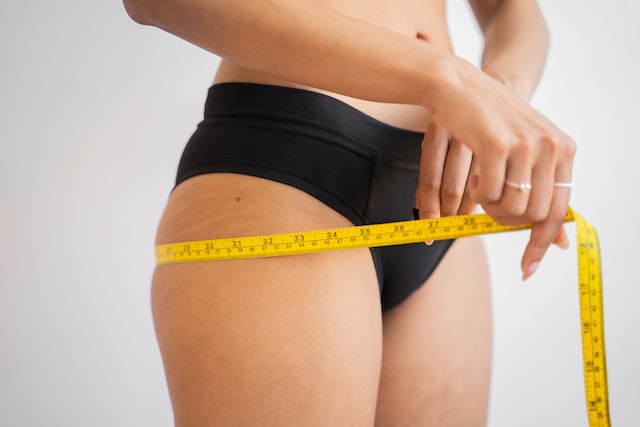Fat plays a crucial role in the body, and managing it properly is essential for overall health and well-being. From hormones to energy production, fat is essential for keeping the body functioning optimally. While it’s important to maintain a healthy weight, it’s also important to ensure that the body has enough fat to support its processes. This blog post will look at the importance of fat in the body, how to manage it, and give you a few handy tips for changing your appearance!

The Role of Fat in the Body
Fat is an essential part of a healthy diet and body. It is crucial for providing energy, aiding in the absorption of vitamins and minerals, and it helps to regulate hormones. Fat provides insulation and cushioning for our organs and protects us from outside elements. It is also the primary source of energy in our bodies. Without fat, we would not be able to survive.
Fat is made up of three main types: saturated, unsaturated, and trans fats. Saturated fats are found primarily in animal products such as meat and dairy, while unsaturated fats are found in plant-based oils like olive, sunflower, and canola. Trans fats are processed and usually found in processed foods.
The human body requires a certain amount of fat to maintain optimal health. Eating too much fat can lead to weight gain and increase the risk of developing certain illnesses such as heart disease and diabetes. On the other hand, not getting enough fat can lead to deficiencies. Similarly, when it comes to managing the fat cells present in your body, it’s all about balance. Too much is unhealthy, but so is too little too!
Weight-Loss Plans Are Important
When it comes to losing weight and fat, a professionally planned weight-loss program is essential. Without it, you may be at risk of missing your goals. Having a plan allows you to safely reach your goals while avoiding some pitfalls associated with dieting.
A well-rounded weight loss program should include a healthy diet plan, exercise regimen, and lifestyle changes. A diet plan must emphasize nutrient-dense foods and balanced meals, and this will ensure you get the essential vitamins, minerals, and fiber your body needs to function optimally. Extreme diet plans found online may lead to rapid weight loss, but they also contribute to significant vitamin deficiencies and health issues. Besides, they are not sustainable.
Additionally, when you don’t fuel your body with sufficient energy, the risk is that the body has to find its energy elsewhere to maintain its functions. This typically means muscle loss, and you don’t want that!
Following a well-designed weight loss program, you can lose weight and fat healthily without putting yourself at risk. This can help you feel better and improve your overall health and well-being.

Building Up Muscles Helps Fat Loss
When you build up muscle mass, your metabolism speeds up, which helps you burn fat faster. Strength training exercises are especially effective for burning fat, as they help you increase your muscle mass while also burning calories.
Lifting weights and engaging in strength training exercises build lean muscle. Increasing your muscle mass can improve body composition, making you look and feel more toned and fit.
In addition to building muscle, strength training has a host of other benefits. Regular strength training helps reduce stress and anxiety levels and even relieve depression, which can positively impact your fat loss journey.
For best results, focus on compound exercises such as squats, push-ups, lunges, and shoulder presses that target multiple muscle groups at once.
Melting/Cooling Fat
Non-invasive fat destruction solutions, such as freezing fat or injections, are becoming increasingly popular because they can target specific fat pockets. These treatments are often chosen over surgical options due to the lower risk of complications, such as infection and scarring, and because they generally require no downtime.
Freezing fat is a procedure known as cryolipolysis that works by exposing the fat cells to extreme cold. The fat cells are killed off by the extreme temperatures, and the body naturally eliminates them from the body through its normal processes. This procedure is usually done on the abdomen, buttocks, back, arms, and thighs.
Injections of medications like Kybella and Belkyra are also used to reduce localized fat. The medications work by breaking down fat cells in the targeted areas and allowing them to be absorbed into the bloodstream for elimination.
While both methods can be effective for small and stubborn pockets of fat, they are no replacement for unhealthy dietary habits! Additionally, these are not suitable for individuals with a high body mass.
Moving Fat to a New Location
For those looking to change the shape of their body, moving fat to a new location can be a great way to do just that. Popular procedures such as BBL are designed to take fat from areas such as the stomach or hips and transfer it to the buttocks. This helps to create the desired shape while also reducing the amount of fat in areas that you don’t want it.
This type of procedure is done through liposuction, which is the removal of fat cells. But instead of discarding the removed cells, they are processed and placed in another part of the body. As a result, the area where the fat was removed will look slimmer and more toned, while the area where the fat was transferred will look fuller and more rounded.

Danger of Low Fat Ratio
It’s important to remember that the body needs fat cells; not all fat is bad. The danger of having too low a fat ratio is that it can have serious health consequences. For example, a low fat ratio can lead to deficiencies and hormonal imbalances, which are needed for a variety of body functions. It can also lead to an increased risk of developing cardiovascular disease, depression, and eating disorders. Additionally, if you don’t have enough fat, your body is unable to store energy, which can lead to fatigue and difficulty exercising. Finally, having too little fat can lead to muscle loss as well as an inability to maintain body temperature.
It’s time to make peace with fat and fat cells. We’ve demonized fat far too much. Fat is not necessarily the enemy of a healthy and lean female body. Understanding your fat-management options to achieve your desired objectives is crucial in building a positive relationship with fat!